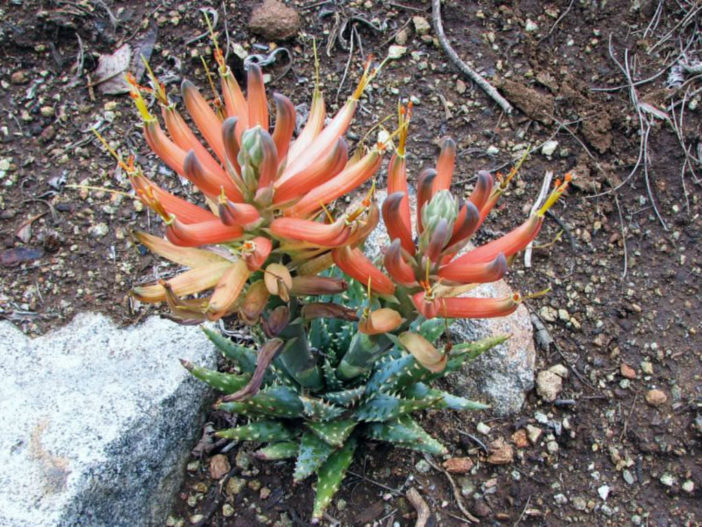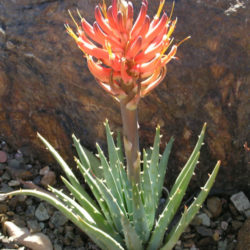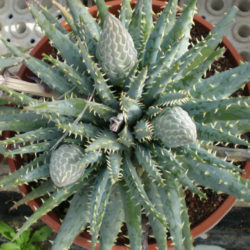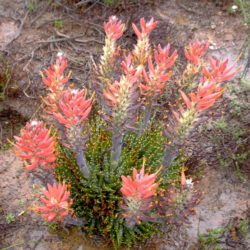Scientific Name
Aloe longistyla Baker
Common Name(s)
Karoo Aloe
Scientific Classification
Family: Asphodelaceae
Subfamily: Asphodeloideae
Genus: Aloe
Description
Aloe longistyla is a small succulent that forms compact, stemless rosettes of lance-shaped, glaucous blue-green leaves with soft to firm white spines on both surfaces and firm, deltoid, white teeth along the margins. The rosettes can grow solitary or in a clump of 2 or 3, rarely up to 10. The leaves can reach up to 6 inches (15 cm) in length and 1.6 inches (4 cm) in width.
In winter, the rosettes produce salmon-pink to flame-red flowers on one or two dense, conical racemes with stout peduncles with few bracts, reaching up to 8 inches (20 cm) in height. The flowers are cylindrical and up to 2.2 inches (5.5 cm) long. The fruits are green to grey capsules that measure up to 2 inches (5 cm) long and 1.2 inches (3 cm) in diameter and contain charcoal-grey seeds.
Origin
Aloe longistyla is native to South Africa. It grows on stony or sandy flats and gentle slopes, usually in shade of small bushes in Little Karoo and south-eastern parts of the Great Karoo from Calitzdorp to Grahamstown.

Hardiness
USDA hardiness zone 9a to 11b: from 20 °F (−6.7 °C) to 50 °F (+10 °C).
How to Grow and Care
Aloes are forgiving plants. However, as with all succulents, Aloe must never be allowed to sit in stagnant water, and the plant should be carefully monitored to watch for signs of overwatering.
Aloes are not particularly fast-growing and will only rarely need repotting. Repot plants in the spring that are tipping over their pots or have ceased growing. Use a fast-draining potting mix with one-third sand or pebbles. When repotting a larger plant, dividing the root ball carefully is possible. Some kinds of Aloe will send off off-sets that can be potted independently.
It needs intense, bright light. They can withstand full summer sun once acclimated. In the winter, provide bright light. It prefers warmer temperatures of 70 to 80 °F (21 to 27 °C) but will survive down to 40 °F (4.5 °C). Feed with a cactus fertilizer in the summer only. Suspend feeding in the winter as the plant goes dormant.
See more at How to Grow and Care for Aloe.
Links
- Back to genus Aloe
- Succupedia: Browse succulents by Scientific Name, Common Name, Genus, Family, USDA Hardiness Zone, Origin, or cacti by Genus
Photo Gallery
Click on a photo to see a larger version.



